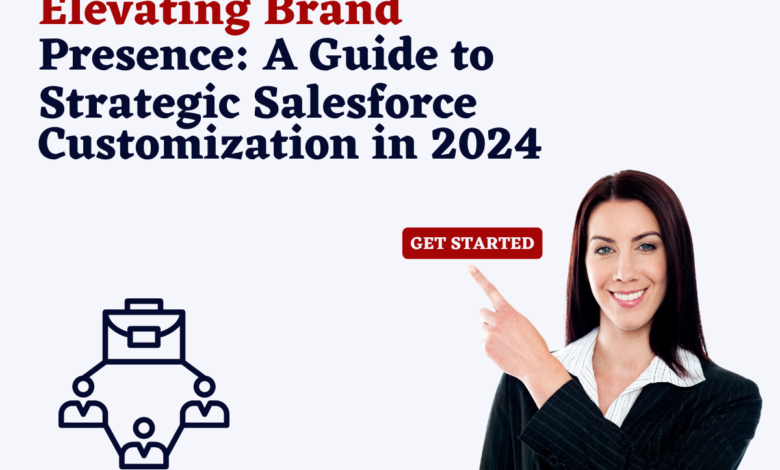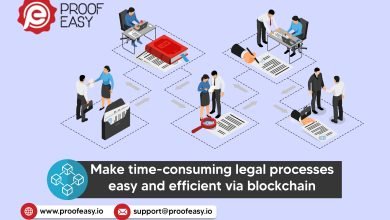A Guide to Strategic Salesforce Customization in 2024
Building a Unified Brand Experience with Salesforce Customization in 2024

Customizing Salesforce to establish a cohesive brand identity is a crucial element in maintaining a company’s distinctiveness. The platform provides robust customization tools, allowing businesses to reflect their brand personality effectively. Consistency in brand experience is paramount for standing out in the competitive landscape, and Salesforce customization can play a pivotal role in achieving this goal.
Admins need to wield these customization features judiciously to ensure a uniform brand presence visible to users across various functions. Neglecting brand compliance can erode loyalty within the target customer profile. In this comprehensive guide, we’ll delve into best practices and strategies for tailoring your Salesforce instance to accurately mirror your brand identity, covering everything from logos and color schemes to messaging.
Understanding Salesforce Configuration and Customization
Salesforce Configuration:
Salesforce configuration involves using the platform’s default resources to build applications without extensive custom coding. This method allows for the rapid creation of new applications using Salesforce’s preset user interface. Admins can add fields, implement formulas, and set rules to achieve specific outcomes, enhancing productivity and supporting diverse user needs.
Salesforce Customization:
On the other hand, Salesforce customization involves adding functions or features not available in the application. It requires developing and coding new functionality into the CRM, addressing specific needs of a particular user or audience. While customization can lead to increased user satisfaction, it’s crucial to avoid over-customization, which may impact future scalability.
Assessing Configuration and Customization Requirements
If you’re uncertain about the need for customization or configuration in your CRM, follow these effective practices to assess your requirements and devise a strategic approach.
- Clarify Your Vision and Objectives:
- Define success criteria.
- Identify immediate needs versus future additions.
- Understand how Salesforce contributes to business growth.
- Consider timelines, budget constraints, and team expertise.
- Evaluate Existing Resources and Future Requirements:
- Distinguish between current capabilities and future needs.
- Differentiate between “needs” and “wants.”
- Assess available in-house expertise and consider external assistance.
- Prioritize End-User Experience:
- Understand user pain points and challenges.
- Identify time-consuming processes and areas for simplification.
- Prioritize user interviews and testing to ensure successful integration.
- Start Simple and Scale Gradually:
- Begin with standard features.
- Gradually expand based on business needs.
- Avoid unnecessary complexity.
Enforcing a Custom Theme Layout
Maintaining a consistent visual theme across your Salesforce instance enhances brand recognition. Ad hoc changes can disrupt a unified brand experience. Best practices for centrally governing theme layout include:
- Change Permission Sets to Lock Profile Layouts:
- Disable permissions for non-admin users.
- Prevent users from overriding defined branding.
- Use Lightning Lock to Set a Base Theme:
- Mandate certain themes and colors with Lightning Lock.
- Customize via Theme Layout Editor.
- Employ Validation Rules for Record Pages:
- Prevent easy rollback of layout changes.
- Restrict updates without admin approval.
- Configure a Dedicated Branding Profile:
- Create a unique profile for marketing users.
- Deny access to theme layout tools for other users.
Customizing the Salesforce Login Page
The login page is a frequently visited point, and customizing it aligns it with your branding. Ways to customize the login page include:
- Upload Company Logo and Update Colors:
- Replace the default Salesforce logo.
- Update colors through Setup.
- Display Inspirational Text/Quote:
- Highlight mission statements or taglines.
- Highlight Product Offerings:
- Use rich media components to showcase offerings.
- Feature Campaign Creative or Promotions:
- Reinforce messaging seen by customers externally.
Customizing Applications in Salesforce
Customizing applications in Salesforce is essential for managing crucial records and data. Steps to personalize these applications include:
- Navigate to ‘App Manager’:
- Edit existing apps or create new ones.
- Customize app name, logo, and primary color.
- Configure App Options and User Profiles:
- Set navigation style, form factors, and personalization settings.
- Choose user profiles that can access the app.
Building Pages with Lightning App Builder
The Lightning App Builder offers a drag-and-drop interface to build customized pages and apps in Salesforce. Key steps include:
- Select Templates and Themes:
- Choose templates featuring your logo, colors, and fonts.
- Drag and configure Lightning components.
- Use Styling Options Within Components:
- Apply CSS stylesheets for customization.
- Add Lightning pages to Salesforce tabs.
- Save Lightning App as a Bundle:
- Bundle components, templates, and branding assets for reuse.
Customizing Salesforce Lightning Email Template
Customizing email templates is crucial for reinforcing brand identity. Techniques include:
- Upload Branded Logo and Replace Headers:
- Apply company colors through CSS.
- Insert Branded Slogan or Tagline:
- Convey core messaging within the email body.
- Use Custom Fonts and Stylistic Elements:
- Match collateral for a cohesive brand experience.
- Enable Pre-Header Text:
- Highlight promotions or marketing campaigns.
Conclusion
Salesforce offers extensive capabilities for customization to align with your brand identity. Whether configuring campaign assets, tailoring UI, or customizing email templates, maintaining brand consistency strengthens engagement. However, branding considerations should evolve continuously, and Salesforce’s flexible architecture supports continuous brand realignment.
Revamping Your Brand Experience with Salesforce Customization
Customizing Salesforce is not just about functionalities; it’s about crafting a brand experience. This guide explores the strategic ways to align Salesforce with your brand identity, covering configuration, customization, and practical steps for a unified brand presence.
Note: For over a decade, we have been a trusted provider of Salesforce customization services, helping businesses achieve growth. If you’re ready to unlock the full potential of Salesforce for your business, reach out to us today.
Embrace an Adaptive Approach to Branding with Salesforce
Brand alignment on Salesforce is an ongoing journey. Discover strategies for continuous brand realignment and ensure your Salesforce instance amplifies your brand across the customer lifecycle.
Note: Specialized Salesforce consultancies can assist organizations in accelerating growth through brand-driven IT transformations.





